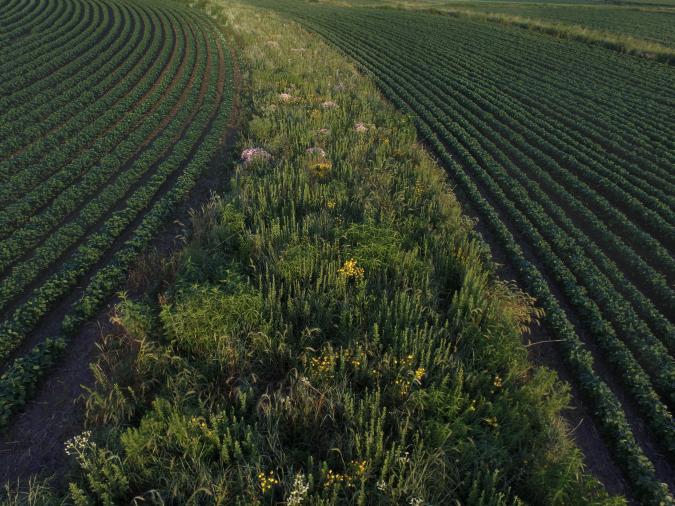Planting perennial prairie strips—environmental boon, while increasing agricultural production

Published: December 2, 2021
Category: Regenerative Agriculture
Less erosion, reduced nitrogen runoff, and loads more butterflies and microorganisms—sound worth it?
Planting perennial prairie strips on farms provides these benefits, and more. Missouri farmer Frank Oberle has been using one-mile-long prairie strips for over 15 years—strips of 30-120 feet wide placed along waterways, through fields, or in terrace channels—seeding them with native flowers and grasses.
“Terraces alone don’t guarantee you won’t lose that delicious topsoil in a heavy rain, especially when you farm highly-erodible glacial soils,” Oberle says. “Since planting prairie on my terraces, I haven’t had a problem with erosion, and now, there is wildlife galore.”
Iowa State University Science-based Trials of Rowcrops Integrated with Prairie Strips (STRIPS) team found that converting 10% of a crop field to native perennial plants can reduce sediment movement by 95%, and total phosphorous and nitrogen runoff loss by 77% and 70%, respectively. STRIPS team co-founder Dr. Lisa Schulte Moore says the practice combines well with profitable production agriculture. Soybean yield increased by 21% through pollinator management. Livestock producers could obtain forage and bedding from strips, reducing hay expense.
“With a confluence of technologies and operations, we can provide incentives for continuous living cover on the landscape that better protect our soil, improve water quality and habitat, and create new revenue streams for rural economies,” Schulte Moore says.
The Bia-Echo Foundation of Palo Alto, CA, has committed $1,104,788 over three years to support faster adoption of prairie strips.
Source: Successful Farming
To view source article, visit: https://www.agriculture.com/crops/conservation/perennials-with-purpose
Organic & Non-GMO Insights December 2021








